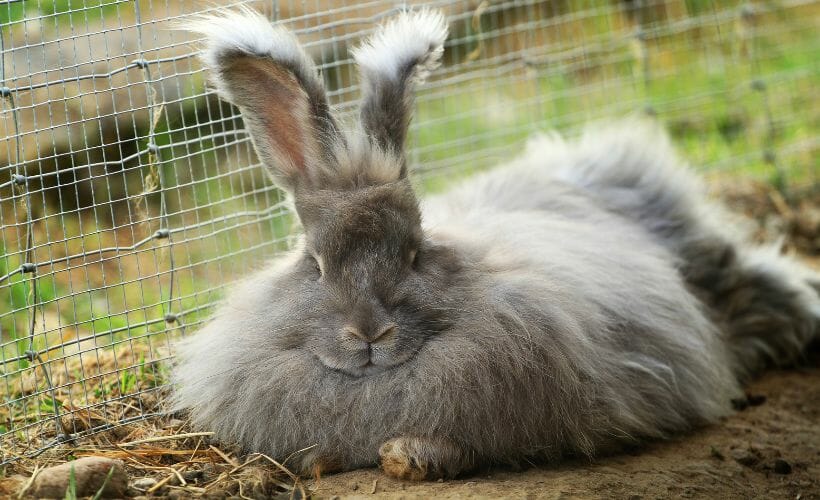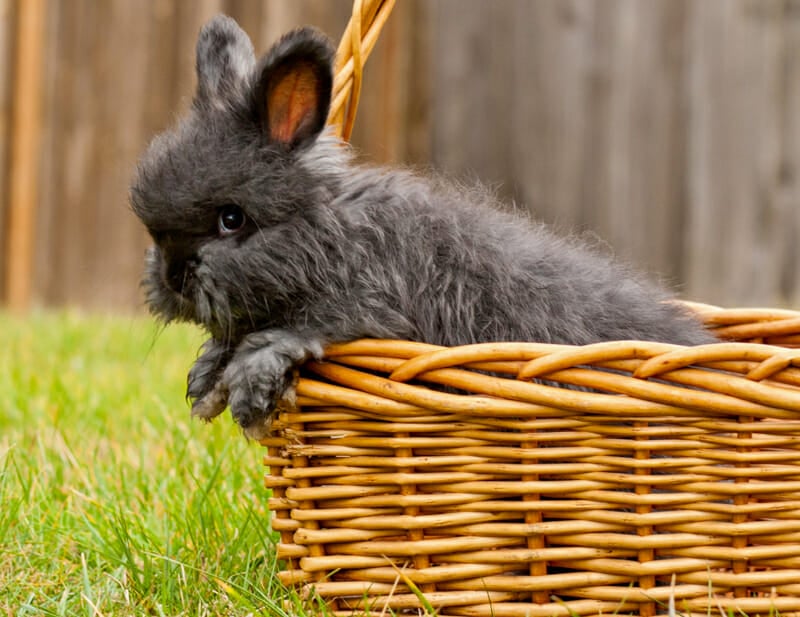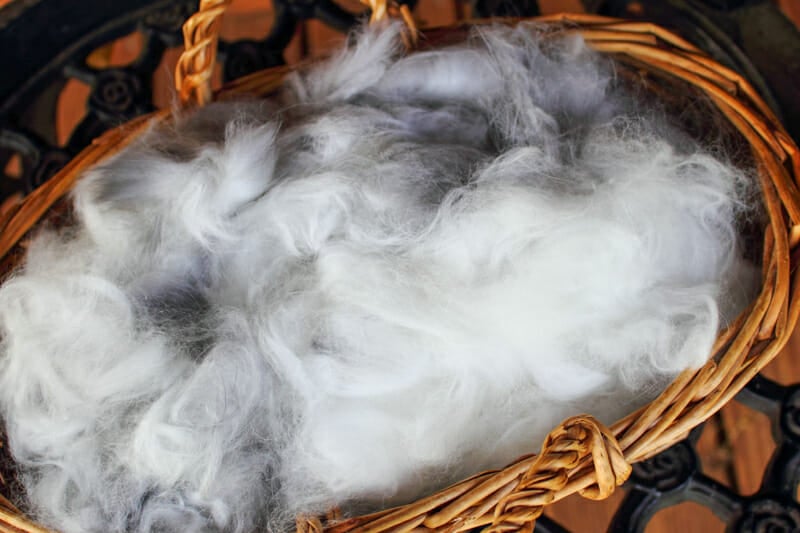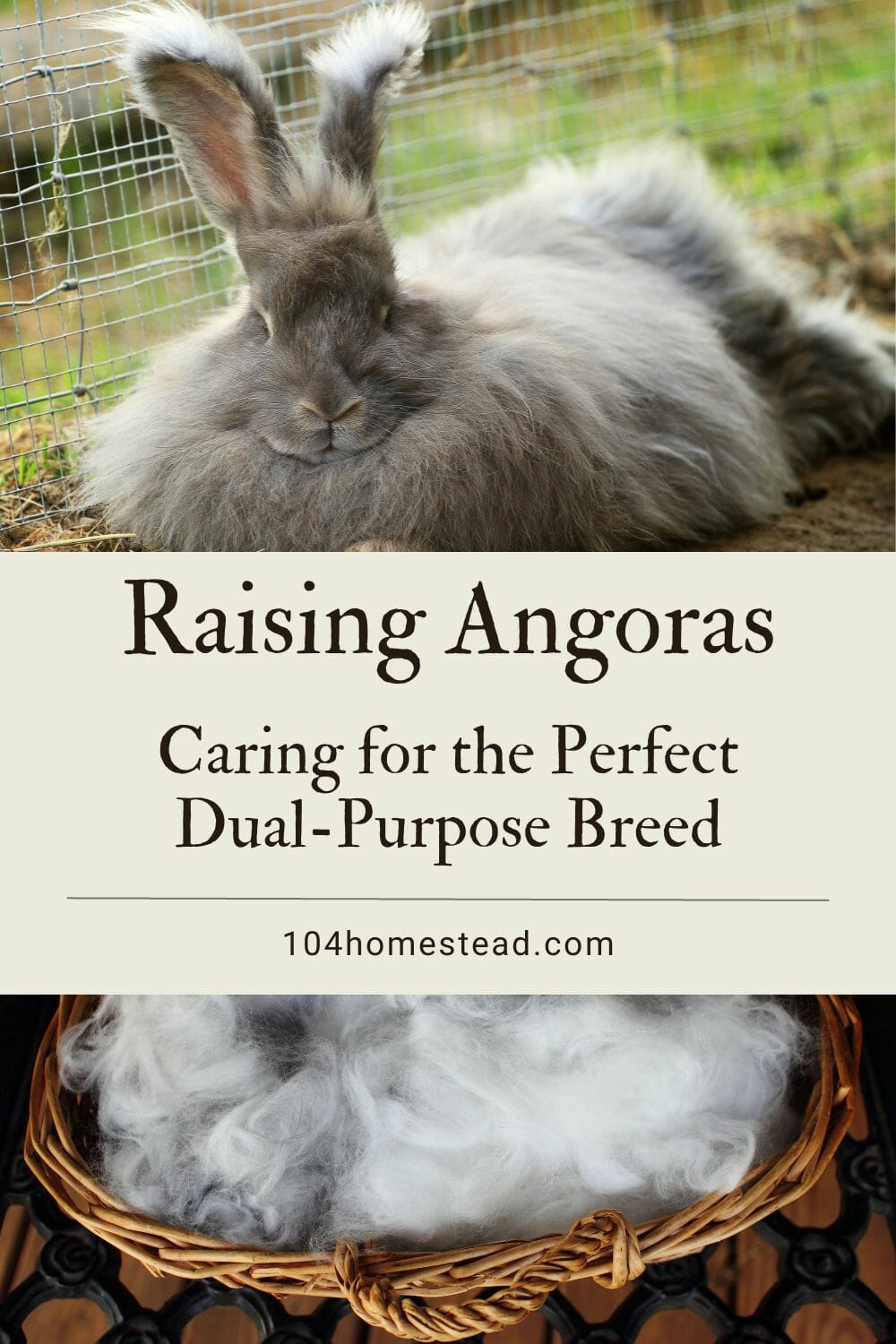Raising Angoras: Caring For the Perfect Dual-Purpose Rabbit
Angoras are known for their wool. They’re also raised for meat and companionship. Learn how to care for these fabulous fiber rabbits.

Raising angoras for fiber and/or meat production is one of the great reasons to bring rabbits to your homestead.
In all of our homesteading days, we have raised over 20 rabbits. Most were “dual duty” as pets, fiber animals, and/or meat. Our French Angoras are the perfect example of a double-duty animal. They have a silky coat that is great for learning how to spin and knit or crochet. This is the main reason we started our Angora herd, to be honest. I love to knit, crochet, and all things yarn related. A companion for the kids that would provide me with wool production sounded ideal.
Taking care of the fiber rabbits requires a bit more than just regular rabbits, however.
Common Types of Angora Rabbits
There are four breeds of Angora rabbits that are recognized by the American Rabbit Breeders Association (ARBA).
English Angoras
The English Angora is the smallest of the angora breeds. They usually weigh between 5-6 lbs. They are distinguished by the fur on their face and ears. The English Angora’s coat can come in a range of colors. The color of your rabbit will be will depend on what color group they are in. These groups include the agouti group, white group, broken group, shaded group, and self group. The most common colors are white, black, blue, chocolate, blue tort, black tort, chocolate, tort, and chestnut.
French Angoras
The French Angora closest resembles the original “angora” rabbit. The FrenchAngora is the second most popular angora in the United States, second only to the English. They weigh between 7.5-9.5 lbs. French Angoras have a long list of coat colors and markings.
Satin Angoras
The Satin Angora produces some of the finest and softest wool compared to any other rabbit, including other Angoras. They weigh anywhere between 6.5-9.5 lbs. The reason their fur looks like satin is due to a recessive gene that causes the casing around the pigment in each hair shaft to be translucent rather than opaque, giving their coat a distinctive sheen or luster. This gene also causes the diameter of each strand of hair to be smaller than normal wool, which makes for finer wool. The Satin Angora comes in white, grey, brown, tan, or some combination of those.
Giant Angoras
The Giant Angora is obviously the largest of the angora breeds, weighing up to 10 lbs. These angoras produce the most wool. They have three different kinds of fiber in their wool: soft underwool (gentle waves and shine), awn fluff (crimped with a hooked end), and awn hair (guard hairs that are strong and straight). Although available in the same colors as the other breeds, the only color recognized by ARBA is white with red eyes (albino).

Managing Angora Hair
The first thing you should know is that their long hair can, and will, get matted in their cages. Our cages need to be completely emptied and cleaned at least weekly, especially during the winter. The rabbits will groom themselves, pulling their hair out, and then they will poop or pee on it, creating a huge matted, smelly mess. One way to avoid this is to keep their hair trimmed on a regular basis. We also brush their hair out each week with a slicker brush during a spa day.
It’s worth noting that like other rabbits, angoras can be litter box trained, but you need to pick a fiber-friendly litter for the box.
Can angora wool be cruelty-free?
As with any animal-produced textile, there are significant concerns about animal welfare when discussing angoras for wool harvesting. There are people who are careful and attentive to their animal’s well-being and those that are not.
You can harvest wool through combing, plucking, or shearing. We comb weekly and shear twice a year.
Grooming & Shearing Angoras
We normally will “shear” or cut their hair very short each spring and in the late summer, garnering about 8 ounces or 1⁄2 pound of wool from each adult rabbit each time. It’s cooling to them and useful for us. Win-win.
To cut their hair, we simply cut it as any human hair. They are not scared or harmed in the process. Brush it out, then hold it about 1 inch from the rabbit’s body and trim carefully. We save all the wool we can in a bag to be washed and spun later and take out the wool that is too matted to use.
The next thing to know is that monthly we give them a pseudo-bath. This helps control some of the matting and shedding, keeping their wool nice and clean when we shear them. It’s a quick process, gently dry shampooing them by sprinkling with some cornstarch and brushing it out. We don’t water bathe them because they can get skittish and scared. If the weather gets chilly and they are wet, it could be disastrous for them. In the wild, a wet rabbit can get into a warm den or under leaves. In the barn, they don’t have that option. They are stuck in their cages.

Angora Nail Care
You should know that their nails need to be trimmed often. This is true for all rabbits, but our experience has led us to follow the thinking that our Angora’s nails grow faster than our Lionhead rabbits. We have experienced Angoras pulling their hair and the hair getting stuck in their nails. Hence, we trim them weekly on their spa day.
To trim the nails, use an animal nail clipper that is set aside for them. Trim carefully just the tips, being careful not to cut past the quick and into a vein. If you let them grow too long, you will need to trim them every two to three days to get them cut down gently.
Sore Hocks
Since they are typically larger rabbits, sore hocks are something to be careful of. This is where they can develop sores on the bottoms of their feet and it can be very painful for them. To minimize the risk, make sure the pen is cleaned often and they have a resting board. This can be a wooden board or an old scrap of carpet that gives them a place off the wire to sit. If you find they develop sore hocks anyway, applying a smidgen of coconut oil on the sore spots 2-3 times daily has helped us in the past with healing.
Feeding an Angora Rabbit
Finally, since most fiber rabbits are considered meat rabbits as well, you should know that they will eat a lot. Our Angoras could eat us out of house and home, truly. They get 1⁄2 cup of food and a treat twice a day, every day. They will eat any food you set in front of them, so you need to be careful to not overfeed them. Quality hay, a handful at a time at least 3 times a week, is also essential for helping them with digestion. Everything you need to know about feeding rabbits is here.
As you can see, raising fiber rabbits isn’t much different than raising any other rabbit, really. They are a special kind that will steal your heart and make you glad you have them.


